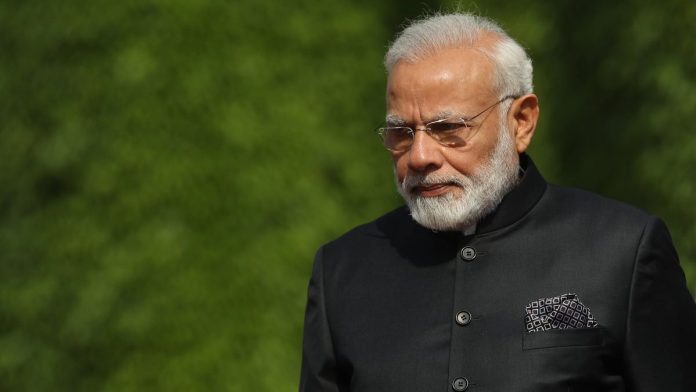Election 2019: Is A Modi Wave Sweeping The Country?

Is a Narendra Modi wave sweeping the country? The answer would depend on who you put the question to. If it’s a Modi bhakt the reply would be positive. Expect an exact opposite response if the respondent is an inveterate Modi baiter. In the election of 2019, there is no category between these polar extremes.
The division is so sharp that perhaps for the first time in an election in the country, there won’t be a confused, fence-sitter of a voter queuing up at the polling booth. He will vote either for Modi or against him. But, coming back to the question we started with, is there a wave this time? The election of 2014, by all indication, there was a wave, at least in a significant part of the country. This year, a lot of enthusiasm is apparent for him, particularly among the youth but it is hard to say if there’s a wave. It is possible there is a strong undercurrent working in his favour.
To grasp the difference between the mood in 2014 and 2019, we need to understand the circumstances then and now. The massive support for Modi in 2014 grew organically out of the anti-UPA mood generated by the anti-corruption movement led by Anna Hazare, the groundwork for which was laid by Arvind Kejriwal in his previous avatar as a civil society activist. The movement, beginning in 2011, was unprecedented in its sweep and impact.
It was the first such movement where television played a massive role in building the public mood. Social media, too, revealed its potential as an instrument of mass-mobilisation. The breathless coverage of the developments beamed live into homes across the country in all their dramatic hue lasted many months. By the time it ended, it had demolished the Congress-led UPA. The government’s credibility lay in tatters.
The angry popular mood provided ideal space for outlier Narendra Modi to move in with his call for change. His articulation on several issues facing the nation, from corruption to economy to national security, struck the right chord in those impassioned times. The challenger to the powers that be in Delhi, proved an irresistible option for voters. It reflected in the results, when the BJP swept with a majority on its own, breaking the nearly three-decade-old trend of coalition governments.
Cut to now. Modi is no more the challenger. Five years in power no more makes him the outlier taking on the insiders. He has to face the questions now. The public mood is not as hypercharged as in 2014. The current support for him is more media-driven, propelled by unceasing propaganda over the last five years. The social media craze is on decline. Yes, actions such as strikes against Pakistan have won him enthusiastic fans, but these have been dimmed by his less than stellar performance in job creation, managing the economy and other bread and butter issues concerning ordinary people.
Persistent efforts at image-building have made him appear a strong and decisive leader, but missing is his inclusive appeal. With Hindutva forces and several other groups with narrow, divisive agendas getting full play under his watch, he no more seems to carry all Indians along with him. But visit any corner of the country and talk to people, particularly youngsters, you will find them vouching for him. However, there is an equal number of youngsters disapproving of him too.
This makes observers wonder whether his personal popularity is more manufactured than organic in 2019. It was different in 2014. The wave appears to be missing. But it is hard to ignore the undercurrent of support for him. This could be the X factor in the ongoing election.

Comments are closed.